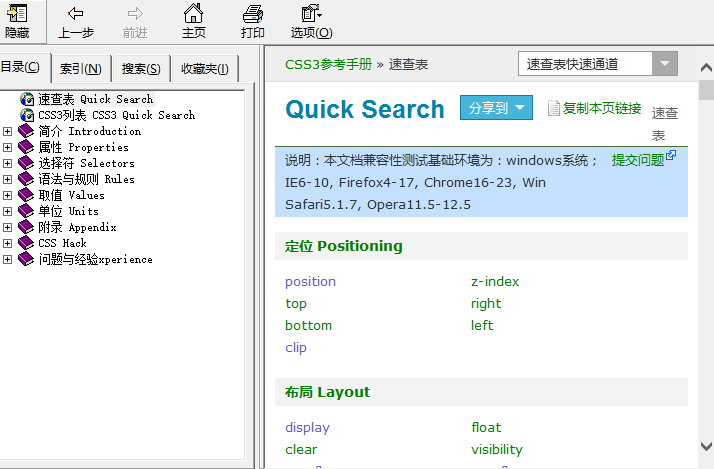
前端性能优化与后端接口调优协同实践指南:让全栈性能飞起来
作为一名全栈开发者,我经历过太多”前端优化到极致,用户体验依然卡顿”的尴尬场景。经过多次实战总结,我发现真正的性能瓶颈往往出现在前后端协同工作的环节。今天就来分享一套经过实战检验的前后端协同优化方案。
一、性能监控先行:找到真正的瓶颈点
在开始优化之前,我们必须先知道问题出在哪里。我习惯使用 Chrome DevTools 的 Performance 面板配合 Network 面板进行分析。
# 安装性能监控工具
npm install web-vitals lighthouse --save-dev
在实际项目中,我会在前端添加性能监控代码:
// 性能监控示例
import {getCLS, getFID, getFCP} from 'web-vitals';
getCLS(console.log);
getFID(console.log);
getFCP(console.log);
// 接口性能监控
const originalFetch = window.fetch;
window.fetch = function(...args) {
const startTime = Date.now();
return originalFetch.apply(this, args).then(response => {
const endTime = Date.now();
console.log(`接口 ${args[0]} 耗时: ${endTime - startTime}ms`);
return response;
});
};
踩坑提示:不要只看首屏加载时间,要重点关注 Largest Contentful Paint (LCP)、First Input Delay (FID) 等核心用户体验指标。
二、前端优化:从资源加载到渲染优化
前端优化我主要从以下几个方面入手:
// 图片懒加载实现
const lazyImages = document.querySelectorAll('img[data-src]');
const imageObserver = new IntersectionObserver((entries, observer) => {
entries.forEach(entry => {
if (entry.isIntersecting) {
const img = entry.target;
img.src = img.dataset.src;
img.classList.remove('lazy');
imageObserver.unobserve(img);
}
});
});
lazyImages.forEach(img => imageObserver.observe(img));
对于接口请求,我会使用防抖和缓存策略:
// 接口请求防抖
function debounce(func, wait) {
let timeout;
return function executedFunction(...args) {
const later = () => {
clearTimeout(timeout);
func(...args);
};
clearTimeout(timeout);
timeout = setTimeout(later, wait);
};
}
// 搜索接口防抖应用
const searchAPI = debounce((keyword) => {
fetch(`/api/search?q=${keyword}`)
.then(response => response.json())
.then(data => renderResults(data));
}, 300);
三、后端接口优化:从数据库到网络传输
后端优化我主要关注数据库查询、缓存和响应压缩:
// Node.js 接口优化示例
const express = require('express');
const compression = require('compression');
const redis = require('redis');
const app = express();
app.use(compression()); // 响应压缩
// Redis 缓存示例
const client = redis.createClient();
app.get('/api/products/:id', async (req, res) => {
const productId = req.params.id;
// 先查缓存
const cachedProduct = await client.get(`product:${productId}`);
if (cachedProduct) {
return res.json(JSON.parse(cachedProduct));
}
// 缓存未命中,查询数据库
const product = await Product.findById(productId)
.select('name price description') // 只选择需要的字段
.lean(); // 返回纯 JSON 对象
// 写入缓存,设置 5 分钟过期
await client.setex(`product:${productId}`, 300, JSON.stringify(product));
res.json(product);
});
实战经验:在数据库层面,一定要为频繁查询的字段建立索引,这能让查询性能提升数倍。
四、前后端协同优化策略
这是最关键的环节,我通常采用以下协同策略:
// 前端:接口批量请求
async function batchRequests(requests) {
// 将多个接口合并为一个批量请求
const response = await fetch('/api/batch', {
method: 'POST',
headers: {
'Content-Type': 'application/json',
},
body: JSON.stringify({ requests })
});
return response.json();
}
// 后端:批量接口处理
app.post('/api/batch', async (req, res) => {
const { requests } = req.body;
const results = await Promise.all(
requests.map(async (request) => {
// 处理单个请求逻辑
return await handleSingleRequest(request);
})
);
res.json(results);
});
另一个重要策略是接口数据裁剪:
// 前端指定需要的字段
const query = `
query GetUserProfile {
user {
id
name
avatar
# 只请求需要的字段,避免返回不必要的数据
}
}
`;
// 后端 GraphQL 接口
app.use('/graphql', graphqlHTTP({
schema: schema,
graphiql: true,
}));
五、实战案例:电商商品列表页优化
以我最近优化的电商项目为例,商品列表页的加载时间从 3.2 秒优化到了 1.1 秒:
// 前端实现无限滚动 + 骨架屏
class ProductList {
constructor() {
this.page = 1;
this.loading = false;
this.init();
}
async loadMore() {
if (this.loading) return;
this.loading = true;
this.showSkeleton(); // 显示骨架屏
try {
const products = await this.fetchProducts(this.page);
this.renderProducts(products);
this.page++;
} finally {
this.loading = false;
this.hideSkeleton();
}
}
async fetchProducts(page) {
const response = await fetch(`/api/products?page=${page}&limit=20&fields=id,name,price,image`);
return response.json();
}
}
后端对应的优化:
// 后端分页查询优化
app.get('/api/products', async (req, res) => {
const page = parseInt(req.query.page) || 1;
const limit = parseInt(req.query.limit) || 20;
const fields = req.query.fields ? req.query.fields.split(',') : null;
const query = Product.find({ status: 'active' })
.sort({ createdAt: -1 })
.skip((page - 1) * limit)
.limit(limit);
if (fields) {
query.select(fields.join(' ')); // 只返回请求的字段
}
const products = await query.lean().exec();
res.json(products);
});
六、持续监控与迭代优化
性能优化不是一劳永逸的,我建立了持续监控机制:
// 性能数据上报
function reportPerformanceData() {
const { href } = window.location;
const performanceData = {
url: href,
fcp: getFCP(),
lcp: getLCP(),
fid: getFID(),
cls: getCLS(),
timestamp: Date.now()
};
// 使用 sendBeacon 上报,页面关闭时也能发送
navigator.sendBeacon('/api/performance', JSON.stringify(performanceData));
}
// 页面卸载前上报
window.addEventListener('beforeunload', reportPerformanceData);
// 定期上报
setInterval(reportPerformanceData, 60000);
最后建议:性能优化要建立数据驱动的文化,定期分析性能数据,设定明确的优化目标,让前后端团队朝着同一个方向努力。
通过前后端的协同优化,我们不仅提升了用户体验,还降低了服务器负载,实现了双赢。记住,最好的优化是那些用户感知明显但开发成本合理的优化。
1. 本站所有资源来源于用户上传和网络,如有侵权请邮件联系站长!
2. 分享目的仅供大家学习和交流,您必须在下载后24小时内删除!
3. 不得使用于非法商业用途,不得违反国家法律。否则后果自负!
4. 本站提供的源码、模板、插件等等其他资源,都不包含技术服务请大家谅解!
5. 如有链接无法下载、失效或广告,请联系管理员处理!
6. 本站资源售价只是赞助,收取费用仅维持本站的日常运营所需!
源码库 » 前端性能优化与后端接口调优协同实践指南
2. 分享目的仅供大家学习和交流,您必须在下载后24小时内删除!
3. 不得使用于非法商业用途,不得违反国家法律。否则后果自负!
4. 本站提供的源码、模板、插件等等其他资源,都不包含技术服务请大家谅解!
5. 如有链接无法下载、失效或广告,请联系管理员处理!
6. 本站资源售价只是赞助,收取费用仅维持本站的日常运营所需!
源码库 » 前端性能优化与后端接口调优协同实践指南





